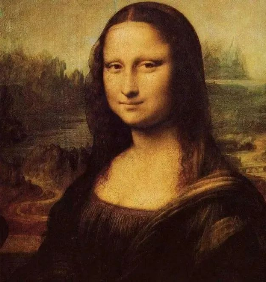10 world famous paintings show you the beauty of Western art and culture
4 min read
Those famous masters in the history of western art and their classic works will always be the model for future generations to learn and study. The French sculptor Rodin once said, “Beauty is everywhere. For our eyes, it is not a lack of beauty, but a lack of discovery”.
Here are 10 masterpieces of art in human history. Let’s learn from them and enjoy the beauty of Western art and culture.
01 Leonardo Da Vinci’s Mona Lisa.
1503-1505.
Da Vinci succeeded in portraying the image of a woman of the urban propertyclass during the period of rising capitalism. The figures in the painting sit elegantly, smile subtly, and the background landscape is deep and deep. The painter’s strange smog-like “boundless gradient coloring method” is fully displayed. The painter tries to make the rich inner feelings of the figure and the beautiful appearance to achieve a clever combination, so that the Mona Lisa smile has a mysterious charm, known as “mysterious smile” by many art historians.
02.The Sunflowers by Van Gogh.1888 The painter paints the yellow color of the sunflower extremely dazzling with a short brush stroke. Each flower is like a burning flame, and the broken petals and sunflower leaves cover the picture like flames. The whole painting is like a flame burning all over the canvas, showing the fanatical passion of the painter.
03 Freedom Leads the People by Eugene Delacroix 1830.
The scene of street fighting at the crucial moment of the victory of the Revolution in July is cleverly combined with freehand style and realism in a romantic way. It uses rich and fierce colors and contrast between light and shade, and is full of dynamic composition, unrestrained brushwork and compact structure to express the surging enthusiasm of revolutionaries. It praised the July Revolution, in which workers, petty bourgeoisie and intellectuals took part, and became a symbol of the French national spirit.
04 Rebin, The Slender Man on the Volga 1870-1873.
The painting depicts a group of portraits of a group of strivings on the Volga River in a dreary and depressing atmosphere, reflecting the suffering life of Russian teniers, expressing the painter’s sympathy for the miserable life of the lower class people, and also artistically reflecting the author’s thoughts of democratic revolution.
05 Botticelli, Birth of Venus 1485.
The picture shows a beautiful legend of Sicily: a beautiful shell floating in the blue sea, standing on the pure and beautiful Venus, flying in the sky gently blowing the shell to the shore, waiting on the shore of the goddess of Spring is opening the red embroidered cloak, ready to Venus into a new dress. Venus was tall and beautiful, her eyes staring into the distance, full of fantasy, confusion and sadness. It embodies a kind of neo-Platonic philosophical trend of thought popular in Florence: beauty can not be gradually perfected or produced from non-beauty, beauty can only be self-completion, it is incomparable, beauty is eternal.
06 The Sistine Madonna by Raphael 1513.
The Madonna in this painting is regarded by the world as the best of the Madonna paintings. The Madonna in this painting is a clean sweep of the cold, rigid and inaccessible appearance of the Madonna since the Middle Ages. The Madonna is depicted as a beautiful, gentle and maternal Italian civilian woman, whose face is filled with calm pride. For the Christ in her arms, her face is filled with deep maternal love with the spirit of sacrifice, because she is going to give her beloved son to the world.
The Night Watch by Rembrandt 1642.
The painting is a group portrait of the Archer Company of the city of Amsterdam. The figures in the painting are presented in the form of a near stage play. One is wearing a black uniform, a red shawl and a black top hat, and the other is wearing a yellow uniform and a yellow hat. Others brandished long guns, waved flags or talked to each other, and the tension of the procession’s departure appeared on paper.
The composition of the painting adopts a technique close to the stage effect, which not only allows everyone’s image to appear on the picture, but also makes the arrangement orderly, and the contrast between light and shade is strong, and the layers are rich and dramatic.
08 Veronais, The Marriage of Cana, 1562.
“The Wedding at Cana” is a 70-square-meter masterpiece that was originally painted for the convent dining room. It shows Christ attending a wedding feast. Hundreds of guests drank in a lavish courtyard surrounded by classical buildings, punctuated by musicians and servants. The characters are lifelike, the colors are brilliant, and real people and worldly life merge into the feast of the Holy Family, presenting a spectacle of grandeur.
Girl with a Pearl Earring by Vermeer.
The painting depicts a girl dressed in brown clothes and wearing a yellow and blue headscarf, who has an extraordinary temperament. Her quiet and calm manner is lifelike, and she seems to have a sad expression that is both reserved and melancholy. The sudden glance makes her shine like a beacon in the darkness. Plain emotion thus has the charm of purifying the human mind.
10 The Last Supper by Leonardo Da Vinci 1494-1498.
The layout has always been that Jesus’ disciples sit in a row, with Jesus sitting alone at one end. In Da Vinci’s painting, the twelve disciples sit on either side of Jesus, with Jesus sitting alone in the middle, his face reflected in the bright window behind him, looking solemn. The strong contrast in the background makes people focus all their attention on Jesus.
Jesus beside those restless disciples, each person’s facial expression, eyes, movements are different. Judas, in particular, was in a panic, elbowing the salt shaker and leaning back, his face full of fear and anxiety.






